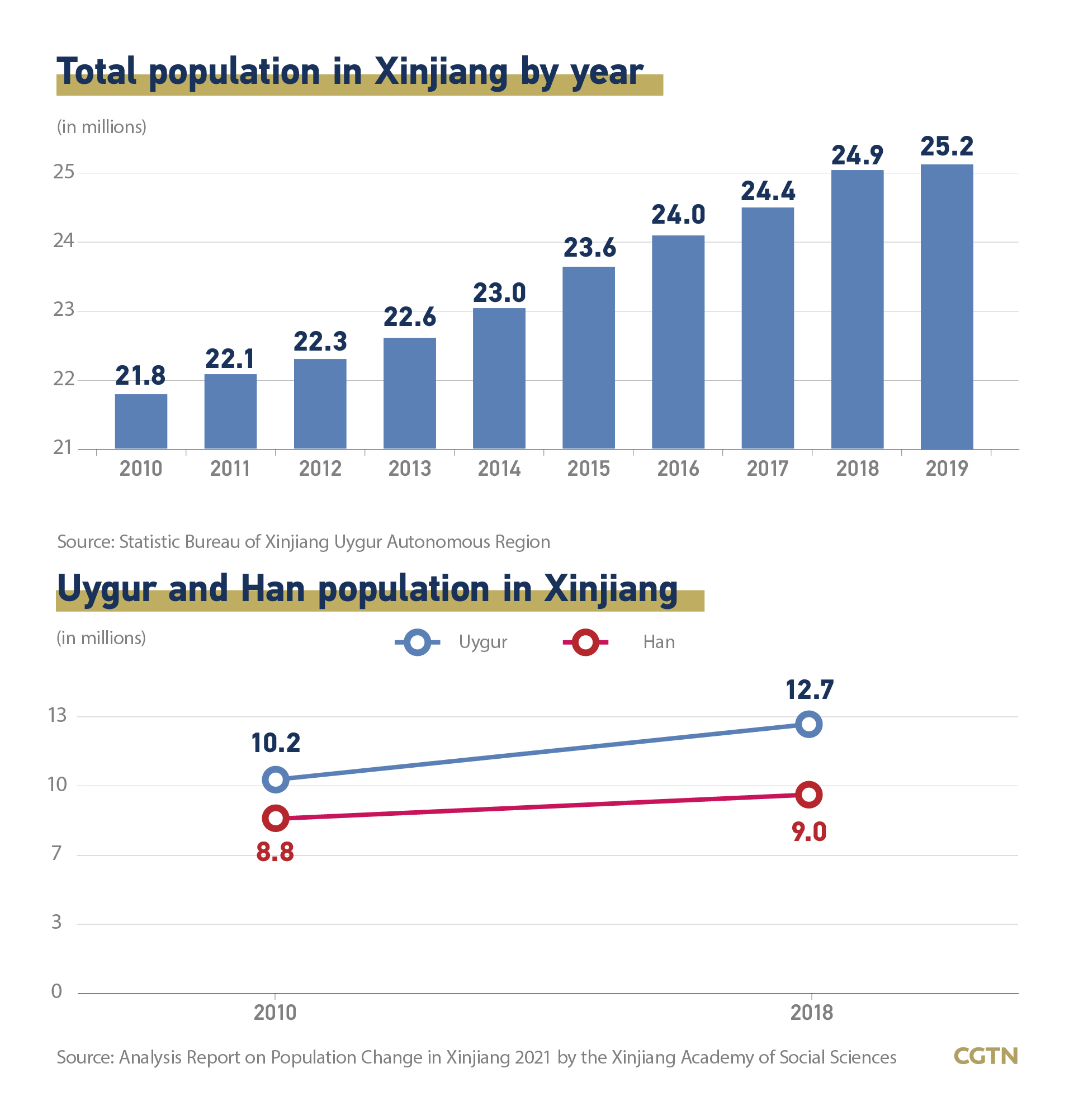The large number of data and cases used in German national Adrian Zenz's Xinjiang-related "research reports" involving anti-terrorism and deradicalization, ethnic religion, labor and employment, family planning, cultural education and human rights protection are arbitrary, inconsistent and flawed, said Xu Guixiang, deputy director of the publicity department of the Communist Party of China Xinjiang Uygur Autonomous Region Committee, at a Xinjiang-related press conference held by the Chinese Foreign Ministry in Beijing last Thursday.
Here are some examples of fabrications in Zenz's report, and data and facts that debunked lies.
Zenz claimed that the Chinese government had committed "genocide" against the Uygurs and other ethnic minorities in Xinjiang, but actually the Uygur population in Xinjiang has seen steady growth.
From 2010 to 2018, the Uygur population in Xinjiang increased by more than 2.5 million, or 25 percent, to approximately 13 million. The growth rate of the Uygur population was significantly higher than that of Xinjiang's total population, which was 13.99 percent. It was also higher than the growth rate of all minority groups combined, which was 22.14 percent, as well as the Han population's 2 percent.

Xinjiang has made unprecedented strides in economic and social development and people's livelihoods have improved.
From 2010 to 2020, the GDP of Xinjiang increased from 540 billion yuan to 1,380 billion yuan ($212 billion). The per capita disposable income in Xinjiang increased from 16,859 to 23,845 yuan ($3,663).

In recent years, Xinjiang's registered urban unemployment rate has remained below 3.5 percent, even amid the COVID-19 pandemic. This has enabled the local people to enjoy the right to work and laid a solid foundation for raising the human rights to life and development to a higher level across a broader sphere.
The overall educational level of the population in Xinjiang has been greatly improved over the past decades. By the 1982 census, the population with an education level of primary school or above was 7.6 million, accounting for 58 percent of the total population. By the 2010 census, it had increased to 19.3 million, or 89 percent of the total population. In 2009, nine years of free compulsory education was achieved in urban and rural areas in the whole region, promoting the rapid economic development and social progress of the whole area.
Zenz also trumped up accusations of China suppressing the religious and cultural rights of the Uygurs. However, the freedom of religious belief is protected under China's Constitution, which states that "no state organ, public organization or individual may compel citizens to believe in, or not believe in, any religion; nor may they discriminate against citizens who believe in, or not believe in, any religion."
"The local government protects religious activities in accordance with the law and fully respects the customs of Muslims," said Abuduwaili Abulimiti, president of the Islamic Association of Shache County in Kashgar Prefecture and the hajib of Aletun Mosque in Shache Town at the press conference.
"Muslims from the surrounding areas have come to the mosque for daily prayers, Friday prayers and the two major religious festivals, Eid al-Adha and Eid al-Fitr."
Abulimiti also performs ceremonies for newlyweds and those who have passed away.
The mosque Abulimiti served has a history of more than 480 years and an area of over 2,600 square meters. It is well-equipped with utilities, air-conditioners, computers and medical services, he said.

